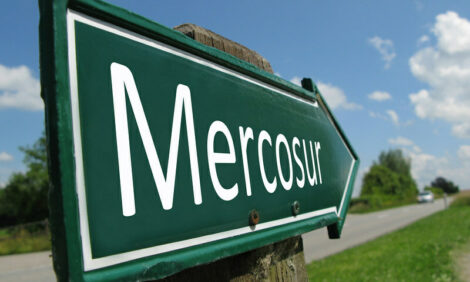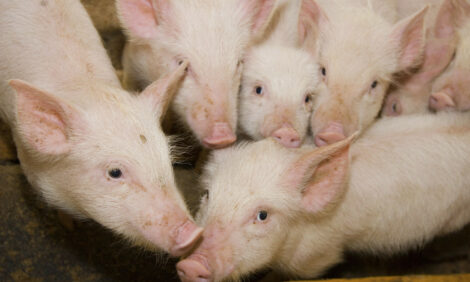



Declining weights due to hot weather
US Weekly Hog Outlook, 4th August 2006 - Weekly review of the US hog industry, written by Glenn Grimes and Ron Plain. Ron Plain
|
The average weight of barrows and gilts declined 0.4 pounds for last week from the prior week. This is the third consecutive week for declining weights. This is normal for weights to decline at this time of the year because of hot weather.
For the week ending July 8, average barrow and gilt weights in Iowa-Minnesota was 263.4 pounds per head. For the week ending July 29, 2006, average weights live for Iowa-Minnesota was 260.4 pounds or down 2.8 pounds for the 3-week period.
Even though temperatures across much of the U.S. hog area have been above normal for the past 2 weeks, hog marketings have run above projections based on the June Hogs and Pigs report. For the 4-week period ending August 5, slaughter of hogs under Federal Inspection has been up about 4 percent based on preliminary data.
For June and July we have had slaughter about 1 percent larger than expected based on the June 1 Hogs and Pigs. In reality, we probably should have been below the June 1 estimate because of the hotter weather this year than in 2005.
Demand for all meats at the consumer level for January-June was below last year with the exception of turkey. Pork demand for these 6 months was down 5.3 percent, beef down 4.4 percent and broiler down 5.9 percent. Turkey demand for this period was up 1.3 percent but turkey demand for the 4 years ending in 2005 was down nearly 20 percent.
The decline in demand for meats has been due in part to record high supplies of total meats, the problems with bird flu and the growth in demand in recent years for most meats.
Pork demand at the consumer level has grown a little in the last 10 years. The good news for the hog industry continues to be live hog demand, which in 2005 was up 16 percent from 1995. Most of the live hog demand growth is due to larger exports and population growth. Net pork exports in 2005 were up 7.3 percentage points of pork production from 1995. In this 10 years, pork export growth has added about 2.4 billion dollars to producer's income. The pork industry was 16 percent larger in 2005 than 1995 based on pounds of pork produced.
Feeder pig prices at United Tel-O-Auction this week were lower than 2 weeks earlier but this is the time of the year for a seasonal decline in prices. The United prices were stronger than some of the other markets we here reported. At United this week, the prices by weight groups were: 40-50# $90 per cwt, 50-60# $79.50 to $90 per cwt and 60-70# $78 per cwt.
Sow slaughter continues to run above a year earlier. For the 4 weeks ending July 22, sow slaughter was up 7.6 percent from a year earlier after adjusting for breeding herd growth. Gilt slaughter through the week ending July 29 shows no signs of herd growth based on our sample. In fact, the last 8 week gilt slaughter is up slightly from 12 months earlier.
Cash hog prices showed strength this week with top cash prices Friday morning up $3.00 to $4.00 per cwt. Weighted average negotiated carcass hogs were up $3.47 to $4.10 per cwt.
The top live prices Friday morning for select markets were: Peoria $46.00 per cwt, St. Paul $50.00 per cwt, Sioux Falls $50.00 per cwt and interior Missouri $49.00 per cwt. The negotiated carcass prices by area were: western Cornbelt $67.93 per cwt, eastern Cornbelt $67.05 per cwt, Iowa-Minnesota $67.63 per cwt and nation $67.47 per cwt.
Pork product prices for Thursday afternoon were up $2.03 per cwt from a week earlier at $72.14 per cwt.
Slaughter this week under Federal Inspection was estimated at 564 thousand head, down 5.7 percent from a year earlier.
ThePigSite News Desk








